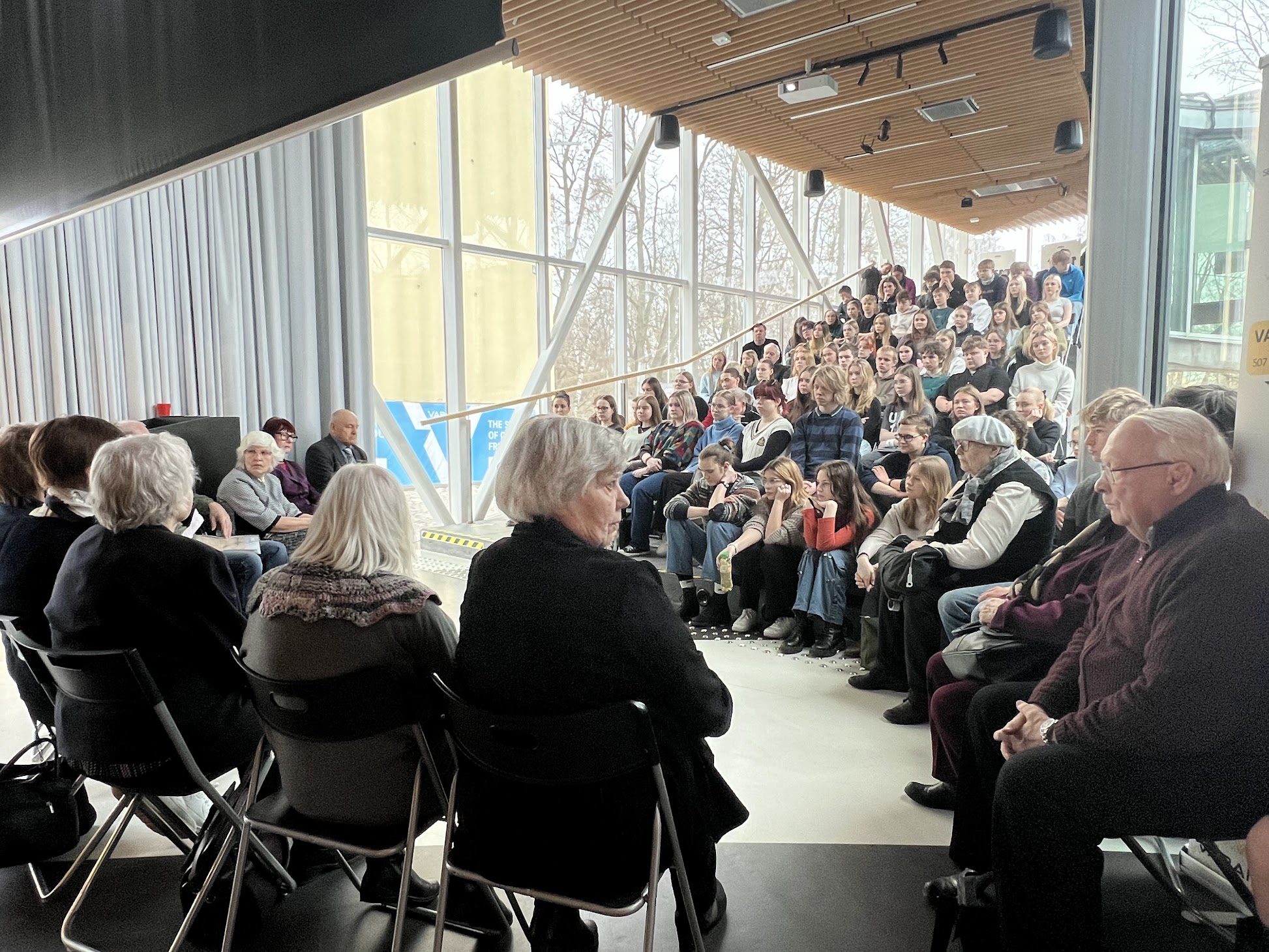March 25th 2024 marked the Remembrance Day of March Deportations – in 1949 Soviet repressive regime took more than 20,000 people from their homes across Estonia and deported them to various places in Siberia.
Youth Movement NoVa invited survivors of deportations to come to Vabamu and share their personal stories about growing up in Siberia. In fact, this was already the 4th event in the series called the Meetup of Generations in which the “Siberian kids” tell their stories to the kids who have been born and raised in independent Estonia. This time the members of the Broken Cornfower Association also brought along some tools they had used in Siberia that helped them survive the harsh conditions there.
For example, Eha Kaljuvee showed a grain grinder that her father, a well-known farmer in Estonia, had built in Siberia from spare parts of a Soviet tractor: “There was always a queue for that grinder in our village, even the local Russians were using this.”

Tiia Niinemaa showed the youngsters how to make waterproof shoe mending material out of regular thread and a piece of dried tar. The shoes mended with this thread would last several other harsh winters and kids could even enjoy sliding on ice in those shoes (without telling their parents).
Enno Uibo, who had been deported with his family as a small kid just shy of his 4th birthday, was surprised to hear that youngsters were mostly interested on how it was to come back from Siberia. Enno returned in a group of pre-teeners five years later as the deportees below the age of 16 were granted amnesty after Stalin’s death in 1953. Enno returned home to find that not much was left of his parents’ house but a piece of basement.
“In our wagon there were such active people who got organized the minute we took off,” Malle Annus, who was just 7 years old when she was deported with her mother and two younger sisters, recalls the three-week long train ride to the remotest territories of the USSR. “There was a chimney in the middle and opposite of it they slashed a hole in the floor, took the bottom off of a bucket and put it in the hole and cushioned it with bed linen. One family had taken a metal bed frame that was placed to lean on the wall across the bucket and covered it with a blanket – and so it became a restroom for all of us!”

About a hundred students who took part in the event at Vabamu were listening very attentively to the unbelievable survival stories shared by deportees. “Those things they had to go through were just horrible,” one student reflected on his emotions after the event. “But I really loved meeting them because they were all such lovely people. It also made me understand how deportations really happened (during the night, the journey took them 2-4 weeks, and the conditions were really appalling). I also realized there was a difference between the two deportations: in 1941 Soviets mostly deported well-educated people active in political or cultural fields but in 1949 they took those who refused to join collective farms or had been assisting the forest brothers.”
Another student commented that now she realizes how history can be told in numerous ways: “In the history classes we can read about the Soviet regime and the term “deportation” is being explained, and our teacher will tell us more. But it makes a stark difference to hear this from a living source – a person who went through the ordeal of being deported – that turns facts into real stories, the number of deportees on paper turn into living humans with faces and lives. It is particularly important not to forget these people and their stories. And hearing their stories put our everyday lives in a perspective: it helps us understand how good our life is in free Estonia.”


